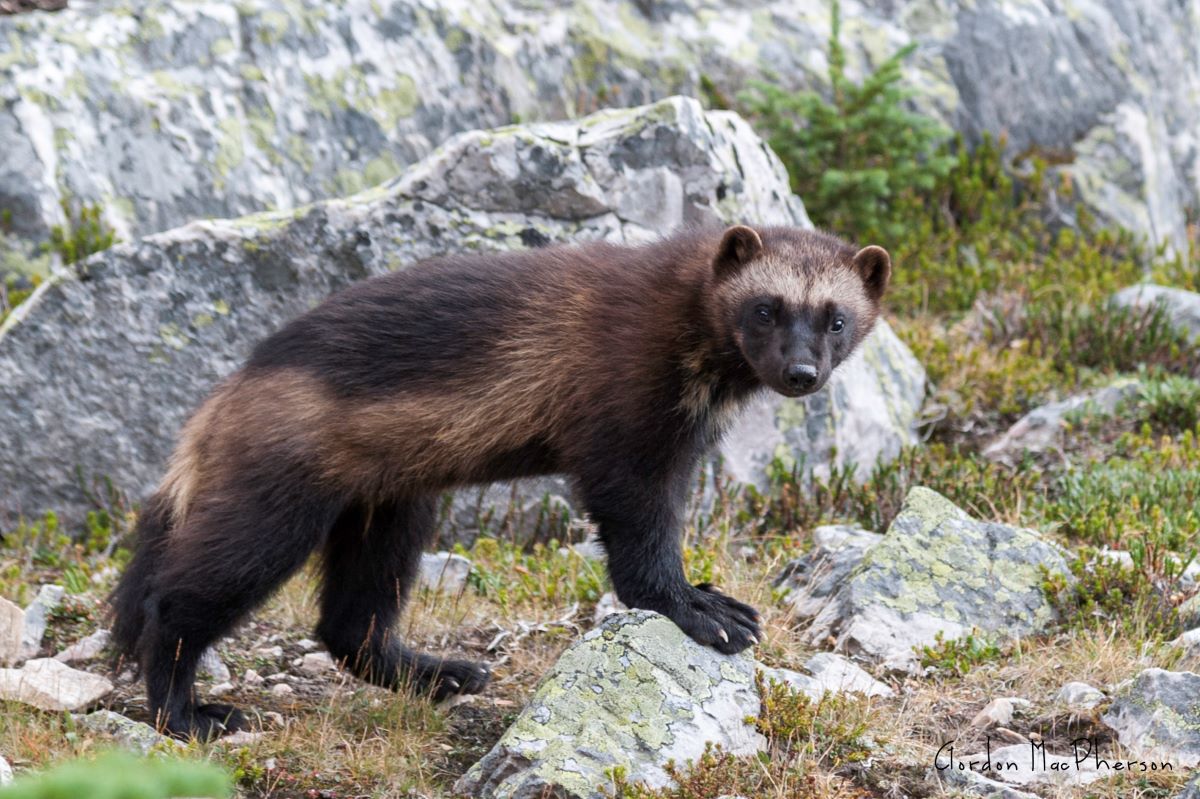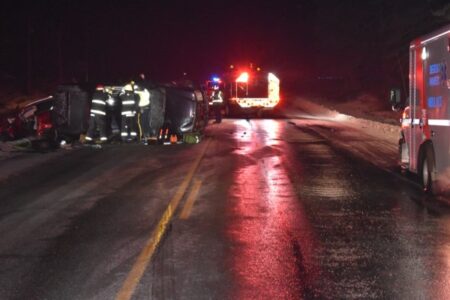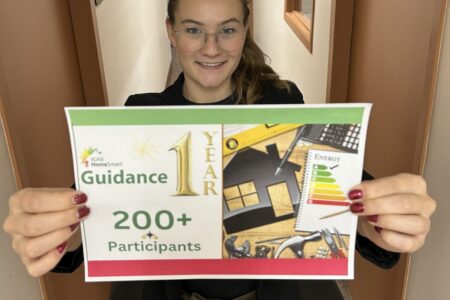Wolverine research boosted by citizen science
Faces & Places: Doris Hausleitner
Story by Nicole Trigg, Kootenay Conservation Program
Wildlife biologist and Selkirk College ecology instructor Doris Hausleitner has always had a penchant for species that are considered something of an underdog, those without champions to promote their cause. It’s no wonder then, that the elusive wolverine captured her imagination years ago when she was approached by friend and colleague Andrea Kortello to start the South Columbia Mountains Wolverine Project.
“Wolverines intrigue me so much,” said Doris. “You go to the hardest-to-reach places and you’ll see the tracks of a wolverine bagging peaks and it looks like it’s doing it for fun. It really is awe-inspiring the amount of ground that they can travel in a day and the amount of terrain that they go over. Every time I think I know everything about a wolverine they’re always surprising me with what they can do.”
Funded by the Columbia Basin Trust, Fish & Wildlife Compensation Program, Habitat Conservation Trust Fund and Yellowstone to Yukon Conservation Initiative with in-kind provided by the BC Ministry of Forests, Lands, Natural Resource Operations and Rural Development, the South Columbia Mountains Wolverine Project started out using non-invasive genetic sampling of wolverine to estimate abundance and connectivity, and unmanned aerial vehicles to determine denning of wolverine. In recent years, the project has relied on citizen science observations collected through the online Wolverine Watch platform, which has been a wildly successful partnership.
“And so we’ve combined habitat modelling and our former work with genetics with the citizen science contribution to decide where we’re going to fly our drone and look specifically for dens or reproductive areas,” said Doris. “All of the reproductive areas that we’ve found, all of them have been informed by citizen science. It’s huge, it’s massive, it’s really a game changer.”
A species of concern in BC, wolverine are found at very low density on the landscape (two per 1000 sq km — lower than bears) and cover vast areas. As a result, data collection is challenging and in the South Columbia mountains in particular, there was a large knowledge gap.
“One thing that our research really helped to illuminate is that wolverine are not as abundant as we thought they would be in our region,” said Doris.
Compounding this concern was the lack of harvest limits on wolverines combined with substantial barriers to wolverine movement such as the network of roads in the South Columbia mountains.
“If there’s an area that is heavily trapped, in a perfect world it would be OK because the population would be fed by other wolverines from other populations but if there are barriers to dispersal, you could just harvest until they’re gone and they won’t be replenished and that’s what we were worried we would see happening.”
Their team shifted to a “drones and dens” approach when they realized their focus had to be on making a direct conservation impact and that the reproductive piece was key to increasing their population. With low reproductive output to begin with, wolverine are vulnerable when they den in mid-February to mid-May at their reproductive sites, to which they have fidelity and return every year if they can.
“We thought if we could conserve just those areas we’ll probably have an impact on the conservation of the species,” Doris said, “and so that’s where the citizen science piece comes in. If we could get other people to start seeing, being our eyes on the landscape, we’ll have a better idea of what’s happening and we’ll have a better idea of where wolverine are.”
To engage the public in their study area, the team joined forces with Wolverine Watch, started by Mirjam Barrueto and used by a collaboration of scientists in BC and Alberta to collect citizen science observations on wolverine. Hundreds of sightings are collected each year with reports coming from as far as upstate New York, Alaska and the Yukon, and every single sighting is mapped and used in research, and the data is shared with whoever can use it.
“Every time we find a wolverine den, we take steps. If it’s on Crown land we apply for conservation status, if there’s one in the park we’ve worked with provincial parks to create a wildlife management zone for it. We take each one and see if we can do something tangible. Putting aside one small denning area at a time, it feels like we’re doing something.”
Another tangible outcome was a research article the team helped co-author that was published in November 2019 (see the infographic summarizing the report) suggesting wolverine trapping wasn’t sustainable in Southern Canada. In August 2020, the updated 2020-2022 Hunting & Trapping Regulations Synopsis for B.C. was released and included a ban on wolverine trapping within the Kootenay and Columbia regions.
“It’s nice to see that science-based management, it’s exciting,” Doris said.
She admits she had no idea eight years ago that she would still be skiing to remote locations trying to find traces of wolverines, or that the project would attract the interest of so many people recreating in the backcountry. She chalks it up to the wolverine’s elusive appeal.
“I think people like to have a little mystery and be in awe of something, like an animal out there being bad ass because they can. I don’t know if we spend time doing that enough in our lives.”
Visit the Wolverine Watch website to learn more: https://www.wolverinewatch.org/
***
The Kootenay Conservation Program (KCP) is a partnership of 80 organizations that work together to protect clean water, conserve important wildlife habitat, and steward the land to allow for healthy, functioning ecosystems in the East and West Kootenays. Learn more at www.kootenayconservation.ca.























Comments